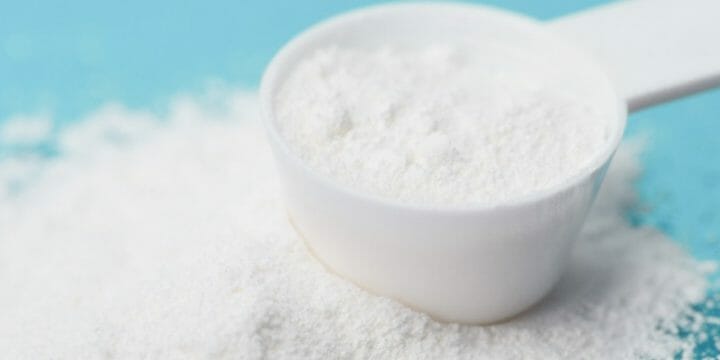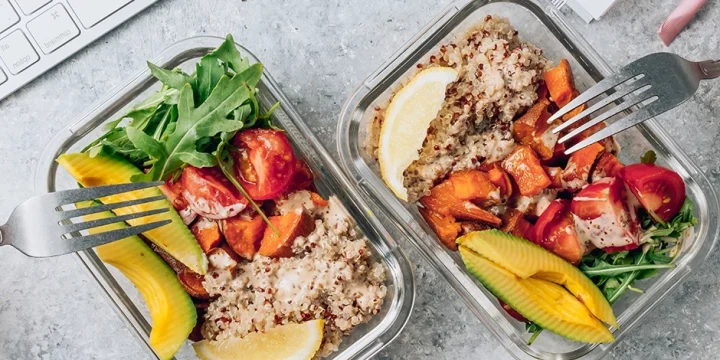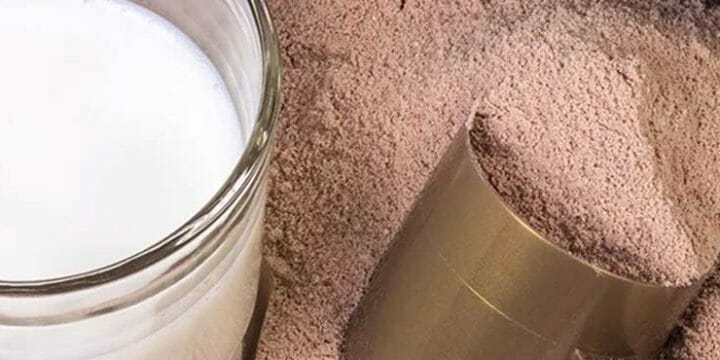Our body has two sources of fuel: carbohydrates and fats. From my personal experience as a fitness trainer, I've observed that while carbohydrates are the body’s primary energy source, those focusing on fitness often aim to burn fat as their primary fuel.
I had clients whose burning mechanisms were in stark contrast since their body composition was quite different, even though their workout plans were practically the same.
Therefore, I conducted thorough research in consultation with my dietitian to find out when and what makes the body resort to fat or carbohydrates as a fuel.
Here’s what I found out.
Quick Summary
- Carbs and fats are both the body's energy sources that it stores in the form of glycogen or fat cells.
- Genetics and lifestyle determine whether a person's body is more efficient at burning fats or carbohydrates.
- According to a study published in the National Library of Medicine, diets high in pasta, cereals, and grains can lead to high blood sugar and hinder fat loss.
- In my experience, a balanced approach, considering both genetic predispositions and lifestyle choices, is crucial for effective weight management and overall health.
Fat Burning vs. Carbohydrate Burning - What’s the Difference?

The main difference between fat burning and carbohydrate burning is in the metabolic pathways of digesting, breaking down, and extracting energy from these two sources.
According to a study on Science Direct, the carbs you eat are either transformed into blood glucose or stored as a backup in the form of glycogen, a large, branched, and chained molecule made of hundreds of glucose units [1].
Glycogen is stored in muscles and the liver, but when stores reach their maximum capacity, glucose gets transformed into fat in a process called 'de novo lipogenesis' [2].
Meanwhile, fat as a fuel comes from healthy fat sources in foods that get broken down into fatty acids, the building blocks of the fat molecules, with an excess stored as energy backup in fat cells.
The body burns fat as a primary source of fuel. However, when glucose is elevated, the body secretes insulin to deal with that sugar, shutting down other energy sources and putting burning fat on hold in the process.
So, depending on your diet (but exercise and metabolism as well), your body is probably more adapted to use one of these sources more efficiently.
"Carbohydrates are broken down into glucose, which may be used as an energy source by our cells, tissues, and organs."
- Aastha Kalra, DO, Founder of Weight Zero MD
Impact on Recovery
Post-exercise recovery is as important as the workout itself. Carbohydrates are essential for replenishing depleted glycogen stores, while proteins are crucial for muscle repair.
However, fat should not be overlooked in the recovery process. Omega-3 fatty acids, in particular, are known for their anti-inflammatory properties, which can help reduce muscle soreness and aid in recovery.
In my fitness career, I've worked with athletes from various disciplines, and I've seen how the optimal balance of fats and carbohydrates can drastically differ among them.
This variance hinges on the sport, the intensity of the exercise, and their unique metabolic responses. Tailoring their diets to these factors has been key to their success.
Personalized nutrition plans, possibly guided by a sports nutritionist, can help in determining the most effective diet for an individual's specific athletic needs.
Are You a Sugar Burner or Fat Burner?

Whether you are a sugar burner or a fat burner is determined by your workout frequency and intensity, as well as your nutrition and genetic predispositions.
There are some signs that can give away your body's preferred fuel with some certainty.
Sugar Burners
According to a study published in the National Library of Medicine, if your diet consists of pasta, cereals, and grains, your blood sugar rises with every meal, causing the hormone insulin to rise as well to escort that sugar (glucose) into the liver, muscle, and fat cells [3].
But a few hours after a meal, insulin usually drops too much, making you feel hungry, tired, cranky, and irritable.
As a result, you struggle to lose weight, especially fat stored in the midsection.
Fat Burners
The more calories you get from nuts, seeds, meat, vegetables, and fruits, the more your blood glucose stays in check, keeping your energy levels stable and allowing your body to use predominantly fat as a fuel.
You usually feel satiated for longer and are not as prone to cravings and snacking, making it easier to maintain a healthy weight.
Besides diet, being a sugar burner or a fat burner may also be determined by your exercise choice and intensity.
Genetic and Individual Variations in Metabolism
When it comes to burning fats and carbohydrates, one size does not fit all. I've seen how genetics can significantly influence how different individuals process these macronutrients. Some clients have thrived on a high-fat, low-carb diet, while others have seen better results with a carb-centric approach.
Specific genetic variations can influence how efficiently we metabolize these macronutrients, impacting our weight, energy levels, and overall health.
For instance, some individuals have a genetic predisposition that allows them to metabolize fats more effectively, making a high-fat, low-carb diet more suitable for them. Others may find that their bodies prefer carbohydrates as the primary energy source.
By understanding your genetic makeup, you can tailor your diet to what suits your body best. This approach moves beyond the traditional one-size-fits-all dietary recommendations, offering a more effective and sustainable way to manage weight and health.
Where Does Energy for Exercises Come From?

Energy for exercises comes from both carbohydrates and fats, but how many calories come from what source depends on the stored body fat, stored glycogen, and type of workout.
During the workout, your body burns both fat and carbs, but at different times.
According to another study in the National Library of Medicine, because glucose is a fast energy source, the body will recruit the carb stores - glycogen in your liver and muscles as fuel in a process called glycolysis [4].
This fuel is depleted quickly, as glucose has only four calories of energy per gram, so it's activated in the first 30 minutes of exercise or when performing high-intensity exercise movements (anaerobic) like lifting a heavy object or sprinting [5].
After around 30 minutes, glycogen levels begin to decline and your body begins to use fat as a fuel source.
Even though fat has more calories per gram (nine), this happens later on because the process of converting fat into readily available energy is much slower.
Therefore, fat metabolism is often activated during longer-lasting aerobic exercises like cycling, walking, and running to burn stomach fat [6].
Impact of Aerobic Exercises
Through my years of training clients, I've consistently seen that combining regular aerobic exercise with a well-balanced diet is a surefire way to help the body lose and burn fat, leading to weight loss. This approach has been a cornerstone of many of my clients' fitness journeys.
Aerobic exercises and other fat-burning activities boost your body's metabolism, which helps break down and use stored body fat. This lowers your total body fat percentage and makes you look leaner.
But, since it’s challenging to be consistent with these, especially with our busy schedules, I always advise my clients to support their efforts with high-quality fat burners that we tested for safety and efficacy ourselves.
Fat-Burning Zone

The 'fat-burning zone' principle is developed based on the switching between fat vs. carb stores.
To work out in the fat-burning zone means keeping your heart rate relatively low while performing a continuous, lower-intensity cardio exercise.
It is presumed that a large number of calories you burn will come from fat.
However, overall calorie expenditure will still be higher with high-intensity workouts, meaning you will burn more calories and lose more weight performing higher-intensity exercises than lower-intensity ones.
Moreover, there are studies published on the PubMed website suggesting that HIIT workouts for fat loss provide better results in terms of individual calorie burn and fat store depletion compared to continuous, moderate-intensity cardio [7].
Yet another study on PubMed showed increased fat metabolism and decreased carbohydrate metabolism after six weeks of continuous training [8].
FAQs
Do You Need Carbs to Burn Fat?
Yes, you need carbs to burn fat, as burning carbs enables fat metabolism. You need glucose to transform fat molecules into energy; otherwise, your body will use your muscle tissue to make it in a gluconeogenesis process. Therefore, you can think of carbs as a flame that burns stored fat, which is why endurance athletes always consume some carbs before their performance.
How Do You Trick Your Body Into Burning Stored Fat?
You can trick your body into burning fat with hacks like drinking ice water, chewing gum after meals, chewing food slowly, and cooling yourself down. However, the foundation of burning more fat should consist of proper calorie intake, healthy nutrition, and physical activity, as the aforementioned hacks can help you burn just a small amount of calories.
Do Low-Carb Diets Burn Fat?
Yes, low-carb diets burn fat. By reducing carbohydrate intake, these diets aim to put the body in a state of ketosis, where it burns fat for energy instead of glucose from carbs. This can result in fat loss, especially in the short term. However, it's important to approach such diets with a balanced perspective and consider long-term sustainability and nutritional adequacy.
References:
- https://www.sciencedirect.com/science/article/pii/S2214647416300010
- https://academic.oup.com/ajcn/article-abstract/48/2/240/4694971
- https://www.ncbi.nlm.nih.gov/pmc/articles/PMC6331362/
- https://www.ncbi.nlm.nih.gov/books/NBK482303/
- https://www.sciencedaily.com/releases/2007/06/070618124541.htm
- https://www.gssiweb.org/en/sports-science-exchange/Article/regulation-of-fat-metabolism-during-exercise
- https://pubmed.ncbi.nlm.nih.gov/22648463/
- https://pubmed.ncbi.nlm.nih.gov/19088769/
About The Author
You May Also Like






